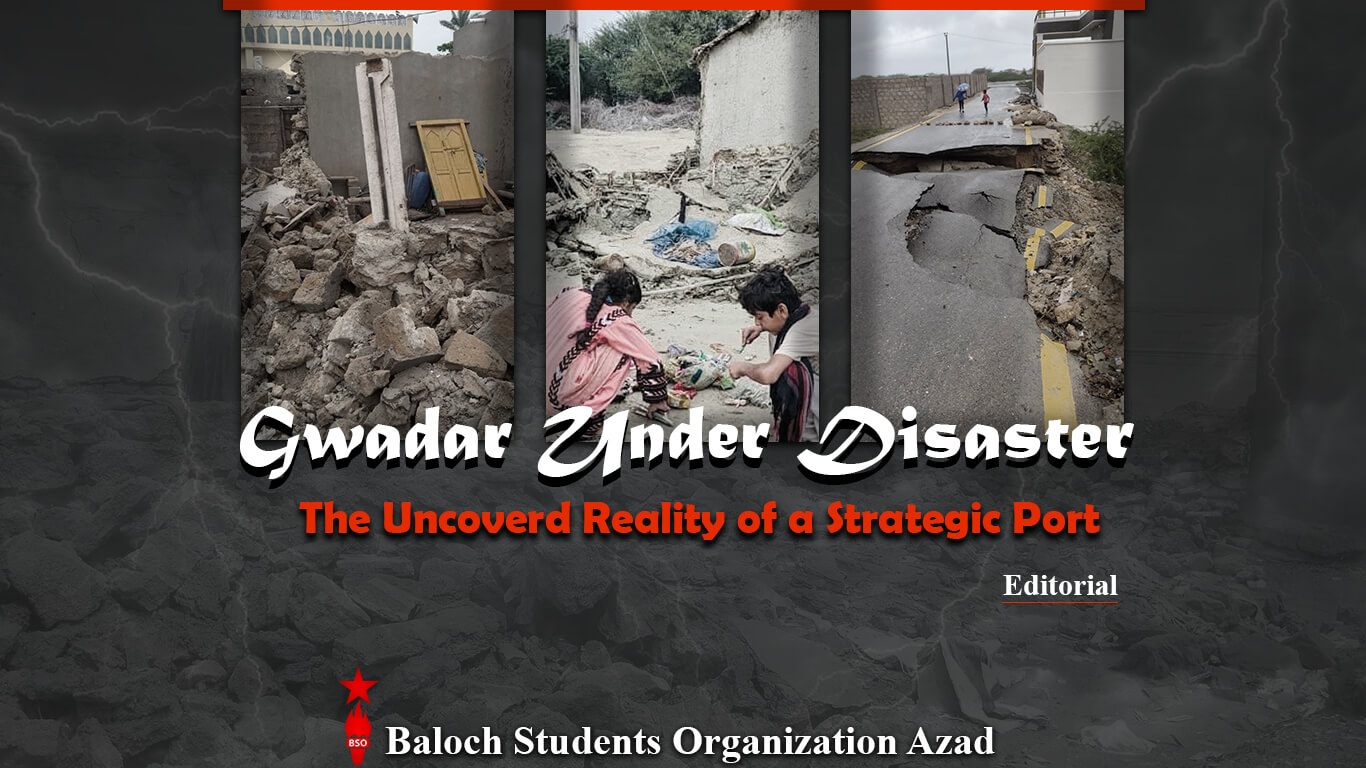Gwadar Under disaster: The Uncovered Reality of a Strategic Port
Balochistan has consistently been the victim of severe floods that have resulted in the loss of thousands of lives, destruction of infrastructures and the washing away of livestocks. Each rainfall in Balochistan brings with it a wave of grief and hardships for its residents. Rainfall of 2022 brought catastrophic floods in Balochistan. Almost every region was affected, and thousands of lives were lost. People of Balochistan had not recovered from previous destructions that more floods come in Balochistan’s regions again. This time, the city of Gwadar, despite its strategic importance to the State, has been severely affected. The city’s inadequate drainage system has failed to manage the floodwaters, leading to widespread destruction of homes and properties, loss of lives, and disruption of transportation. The residents of Gwadar are left stranded, devoid of basic necessities, their lives paralyzed by the curse of flood. The rainfall in Balochistan began on February 25th, culminating in floods by February 28th. The city of Gwadar was the most affected, with the entire city submerged. While rainfall is a natural phenomenon, its impact is significantly more devastating in regions like Balochistan due to the lack of proper drainage systems. Each rainfall event results in a destructive flood, making life difficult for the people and leading to the destruction of their homes and properties. There is an obvious absence of a disaster management programs, leaving the people to deal with the floods on their own. Without any assistance from the administration or the government, the residents of Gwadar bear the burden of this natural disaster. Gwadar holds a special value as one of the most important geo-strategic locations in the world. Despite being a significant investment for China and Pakistan under an economic cooperation project, the residents of this city have consistently been in dire need of basic facilities. The reality of this strategically important city is the non-availability of fresh drinking water and the lack of management of catastrophic floods. Promises of Pakistan about development of Gwadar are all lies, as the local lives are at risk due to these floods. The Pakistani State has consistently misrepresented the progress and prosperity of Gwadar, particularly in terms of infrastructure. This deception was exposed during the recent floods. A small area inhabited by outsiders’ remains in a favorable condition, while the regions where the local populace resides are submerged owing to the city’s inadequate infrastructure. The narrative propagated by the colonizers is that Gwadar has been developed by the State and the occupying forces from China. However, the realities on the ground is starkly different. The local residents of Gwadar endure a challenging existence. They have been persistently protesting for their basic amenities such as electricity, employment, and potable water. The recent floods have exacerbated the harsh conditions faced by the people of Gwadar. The city lacks a proper management system. The absence of a drainage system and infrastructure to manage floodwaters or direct them towards the sea has resulted in widespread flooding. Currently, the entire city is drowned, and many homes have been destroyed. The supposed prosperity of Gwadar is a fabrication. The State of Pakistan and China have only constructed infrastructure to maintain their business operations and transportation at the Gwadar port, leaving the locals to bear the impact of the floods. The Gwadar project has not brought any benefits to the people. Instead, it has merely served as a strategic tool for the benefits of the occupiers like Pakistan and China. The international champions should not be fooled by the white lies of the occupiers rather look into the reality of Gwadar and its people’s suffering.

